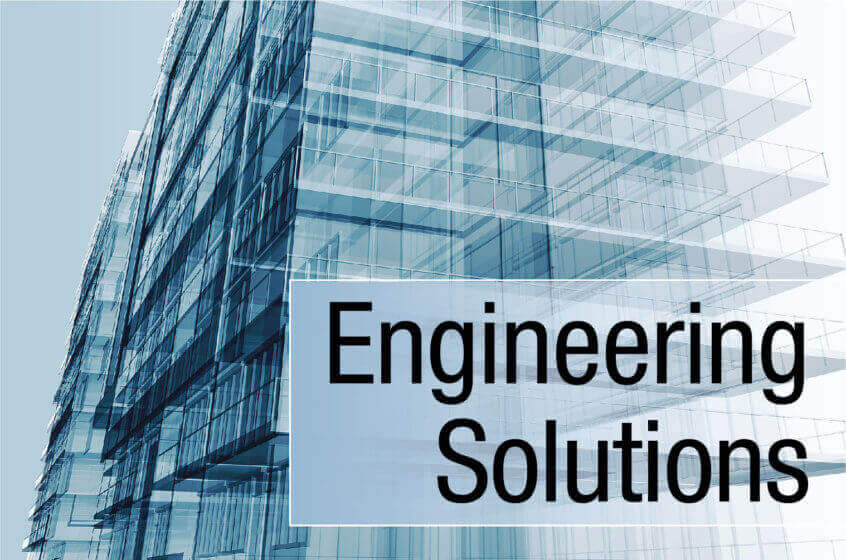
Preliminary research around COVID-19 has been released due to the urgent need to address the current situation, but it is likely to take years to reach scientific consensus regarding the propagation and transmission of this virus. Current consensus does indicate social distancing, surface cleaning and disinfection, handwashing, and other strategies for good hygiene are more important than anything related to HVAC systems. That person-to-person transmission most commonly happens during close exposure to a person infected by COVID-19, primarily via respirable droplets produced when a person speaks, coughs, or sneezes.
Current guidance from the CDC indicates the contribution of respirable particles (aerosols or droplet nuclei) due to close proximity is uncertain and airborne transmission from person-to-person over long distances is unlikely. There is not complete consensus around this in the community. Based upon previous investigation into SARS, spread through aerosolization remains a potential secondary transmission method, especially within the built environment that contains heating, ventilation, and air conditioning (HVAC) units.
As HVAC systems do play a part in our indoor environment and can support movement of aerosols through a building, what can be done to minimize the effects of this transmission path? Following are a few suggestions:
- Increase outdoor air ventilation to the building to increase dilution within the building.
- Disable Demand Control Ventilation (DCV) control strategies as these strategies reduce the amount of ventilation air introduced into a building.
- Turn off Energy Recovery Wheels to eliminate the potential for cross contamination.
- Increase filtration to a minimum MERV-13 and seal edges to limit bypass.
- Operate HVAC system longer or 24/7 to enhance the impacts of dilution and filtration discussed above.
- Consider room air cleaners with HEPA filtration in highly used spaces.
- For Healthcare Facilities, ensure air handling systems are maintaining appropriate directionality of airflow, required pressure relationships, exchange rates, etc.).
- Consider upper room ultraviolet germicidal irradiation (UVGI) in high risk spaces such as waiting rooms, shelters, etc. to help decontaminate the environment around occupants. Pay particular attention to the safety of occupants by avoiding direct exposure to the UV-C light. Follow manufacturer recommendations for installation.
- UVGI in the HVAC Systems. Traditionally, UV-C installations in mechanical systems have centered around the sterilization of fixed surfaces such as cooling coils and drain pans to stop biological fouling and promote microbial deactivation. Airborne deactivation is also possible with duct mounted UV lights. Since this is “on the fly” sterilization, consideration needs to be given to the design of these installations. The effectiveness of these systems depends on the Dosage delivered. Dosage equals Intensity (amount of UV emitted by the lamps) multiplied by time. So these installations typically have higher UV output and may be installed parallel to the airflow path to increase the exposure time. ASHRAE is offering a free seminar, Reducing Infectious Disease Transmission with UVGI, on April 21, 2020.
- Maintain the relative humidity levels at 40%-60% in the building. There are numerous studies on the positive impacts of maintaining building relative humidity in this range. Dryer air allows microbes, dust and infectious agents remain entrained in the airstream and travel further than in air with a higher moisture content. Dry air also lowers the bodies’ natural immune defenses that protect us from infractions. An article from Forbes provides an introduction to this topic and Dr. Stephanie Taylor, MD, M Arch, produced a paper entitled, Is Low Indoor Humidity a Driver for Healthcare-Associated Infections? describing a study conducted in hospital patient rooms. The American Society of Microbiology Journals published Effects of Air Temperature and Relative Humidity on Coronavirus Survival on Surfaces and Consulting-Specifying Engineering magazine published Climate-informed HVAC increases in relative humidity may fight COVID-19 and other pandemics in April 2020.
It should be noted that many of these suggestions may impact the operating costs of the building in the short term. This impact should be weighed against the need to protect the occupants and users of our built environment during this COVID-19 pandemic.
ADDITIONAL RESOURCES:
- The American Society of Refrigeration and Air-Conditioning Engineers (ASHRAE) developed COVID-19 Preparedness Resources and has established the ASHRAE Epidemic Task Force to respond to the current global COVID-19 pandemic and provide guidance on how to prepare for future epidemics. This task force will address the challenges as it relates to the effects of heating, ventilation, and air-conditioning systems on disease transmission in healthcare facilities, the workplace, home, public and recreational environments. The task force will also provide recommendations for setting up temporary field hospitals in convention centers, arenas and indoor stadia to deal with surges.
McKenney’s is aware that every facility is unique and is faced with different operational challenges. For more specific feedback on your particular building or system, please contact us to discuss.
Have a question for our experts? Leave your comment below or contact our team directly. Chris Shirah leads our Healthcare Team, Matt Norman leads our Energy Group and Rick Dustin leads our Engineering Team.








One Comment on “The Impacts of COVID-19 on Building HVAC Operations”
Thanks for sharing valuable information